Hello all,
I know there are many new people interested in Tesla and Tesla Coils each year, and so many times its confusing to find plans for something simple to build. Here is a simple Tesla Coil that gives a 12" discharge.
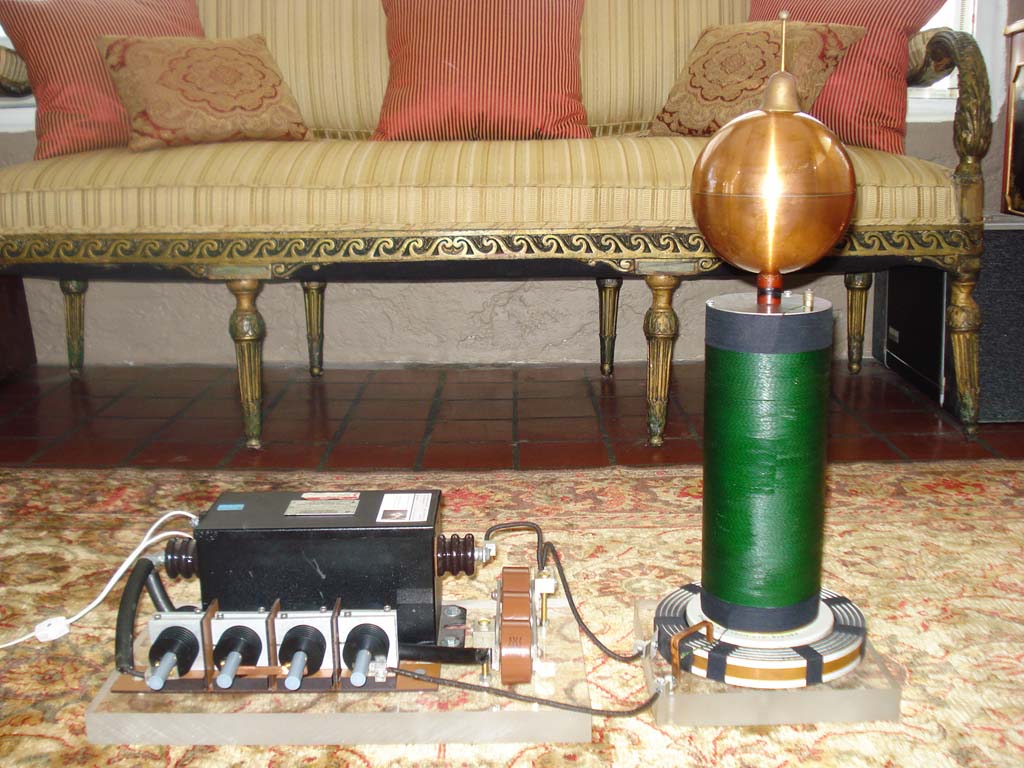
It isn't a perfect design, but a classic example of what a young person in the 1920s might be building. I've put a few modern materials (acrylic base) with a few vintage (bakelite, silk covered wire). This could easily be made with normal wire on a wooden base in bread-board fashion.
Basic Tesla Coil
There is also a brief movie.
The coil consists of:
9000V 60mA neon transformer
(3) .002 mfd 40kV Doorknob Capacitors, wired in parallel for .006 mfd.
a 4-series Tungsten Spark Gap
250 turns of wire on a 4.5" diameter PVC pipe (Secondary Coil)
5 turns of 1" copper ribbon for the primary coil
6" Copper Float (Topload)
Not the greatest coil ever made, but relatively simple and useful...
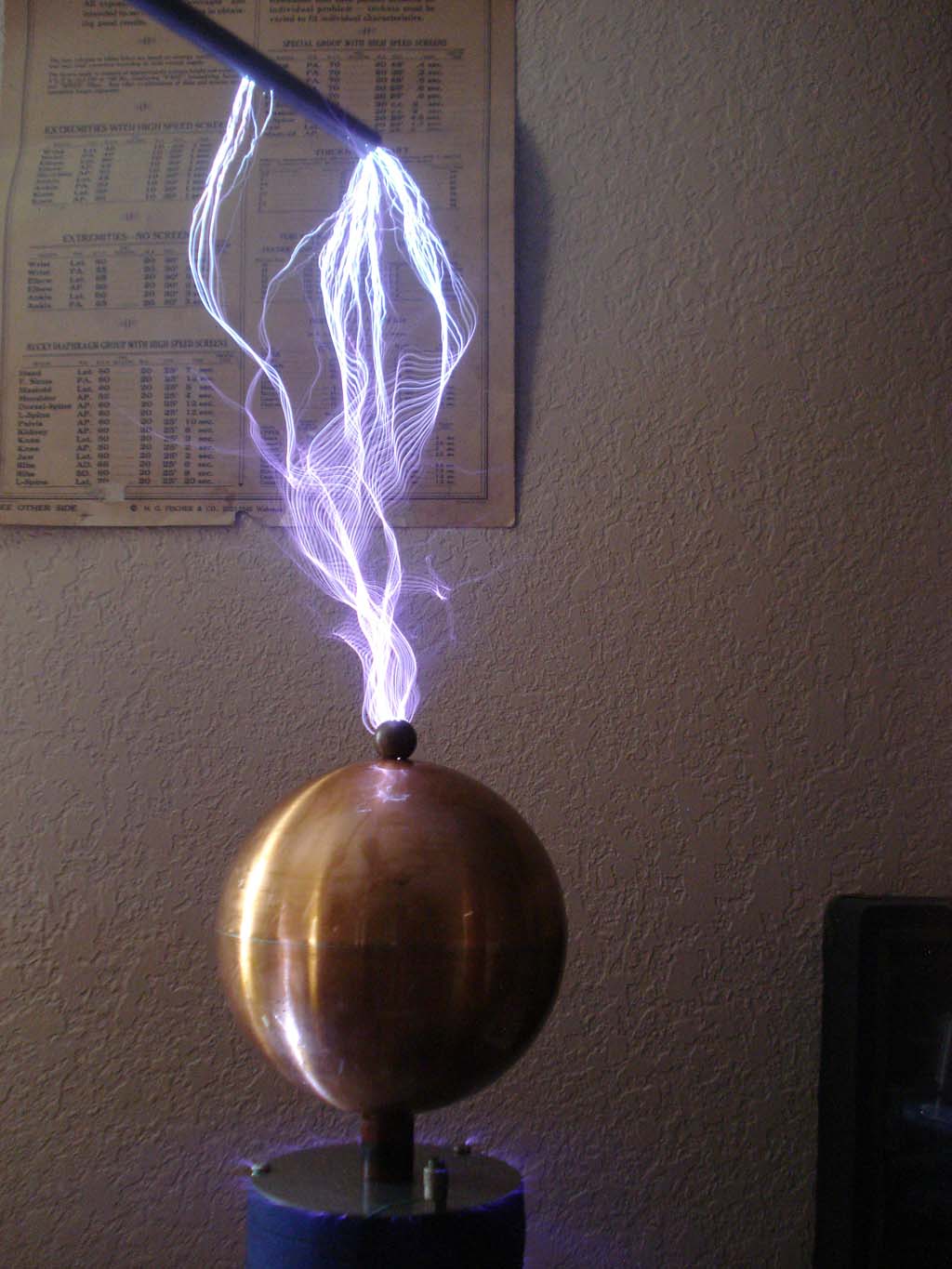
Jeff
I know there are many new people interested in Tesla and Tesla Coils each year, and so many times its confusing to find plans for something simple to build. Here is a simple Tesla Coil that gives a 12" discharge.
It isn't a perfect design, but a classic example of what a young person in the 1920s might be building. I've put a few modern materials (acrylic base) with a few vintage (bakelite, silk covered wire). This could easily be made with normal wire on a wooden base in bread-board fashion.
Basic Tesla Coil
There is also a brief movie.
The coil consists of:
9000V 60mA neon transformer
(3) .002 mfd 40kV Doorknob Capacitors, wired in parallel for .006 mfd.
a 4-series Tungsten Spark Gap
250 turns of wire on a 4.5" diameter PVC pipe (Secondary Coil)
5 turns of 1" copper ribbon for the primary coil
6" Copper Float (Topload)
Not the greatest coil ever made, but relatively simple and useful...
Jeff
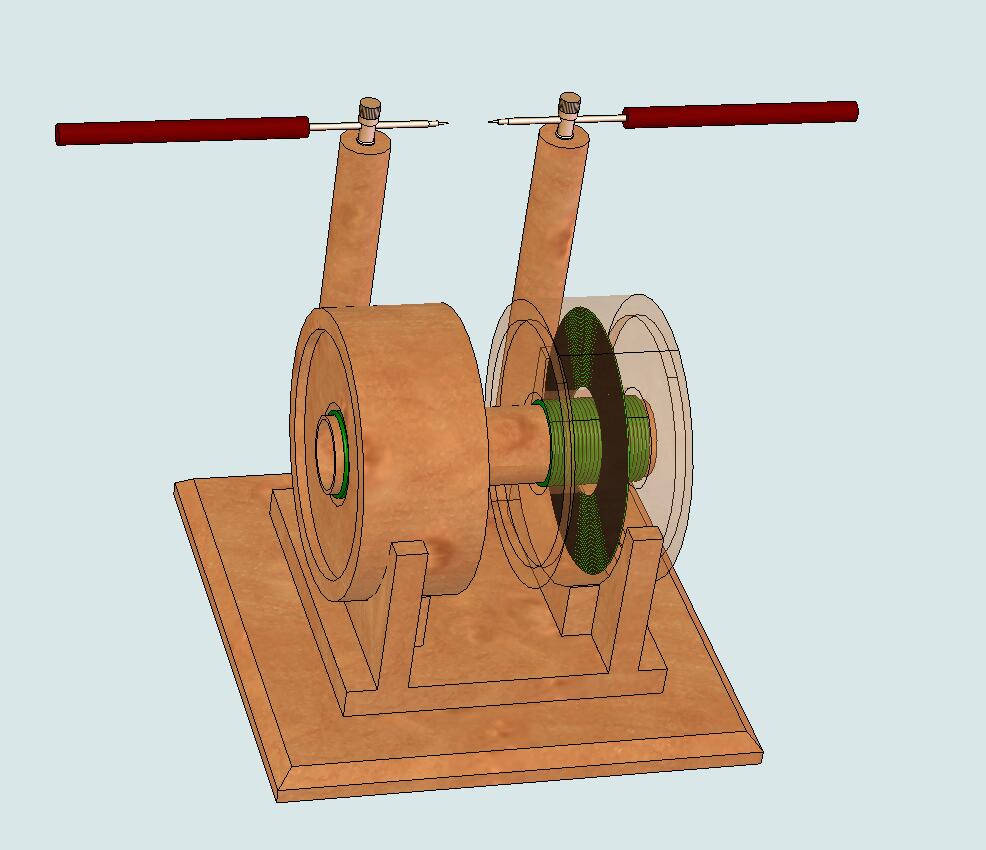
 Spirit lamp!
Spirit lamp!  No wonder the spark gap has holes in the base?! Not so the light bulb could "breate"?!
No wonder the spark gap has holes in the base?! Not so the light bulb could "breate"?! 

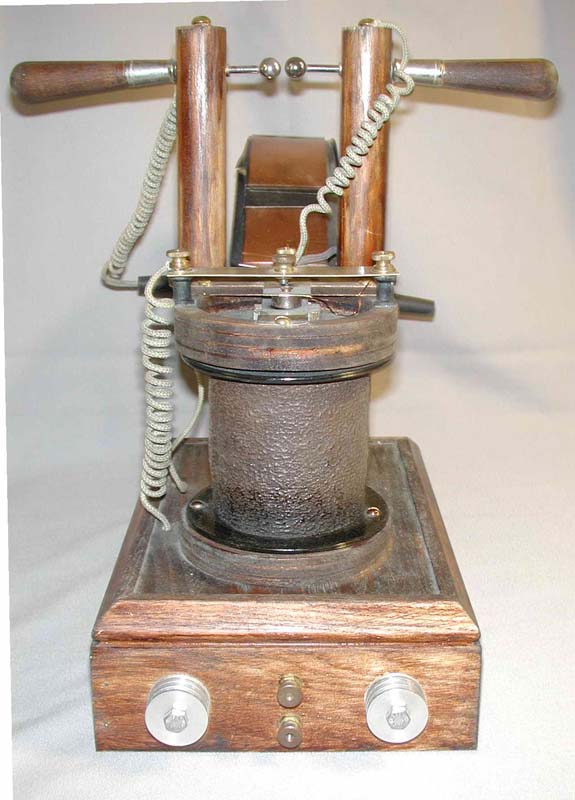
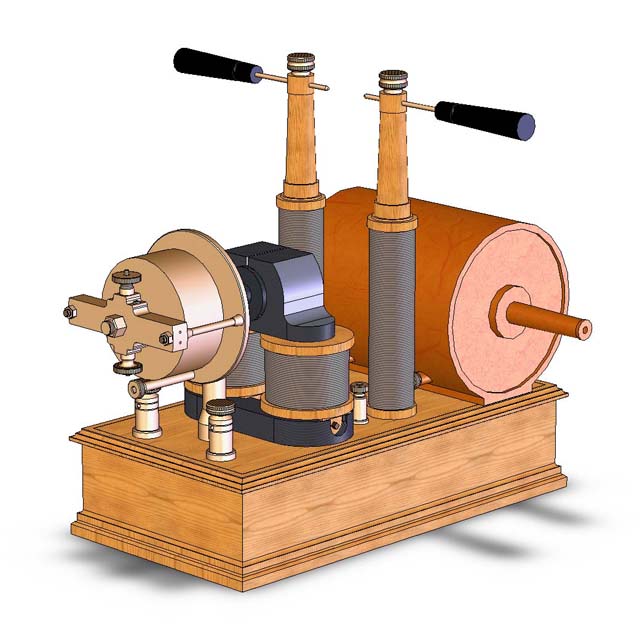
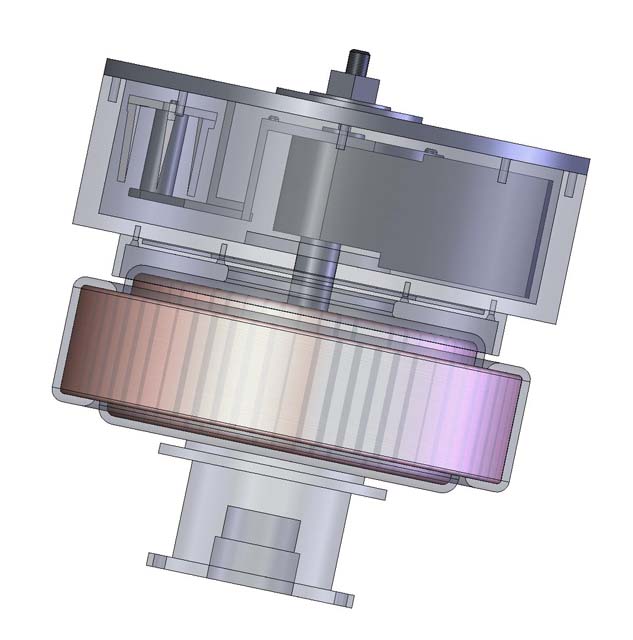

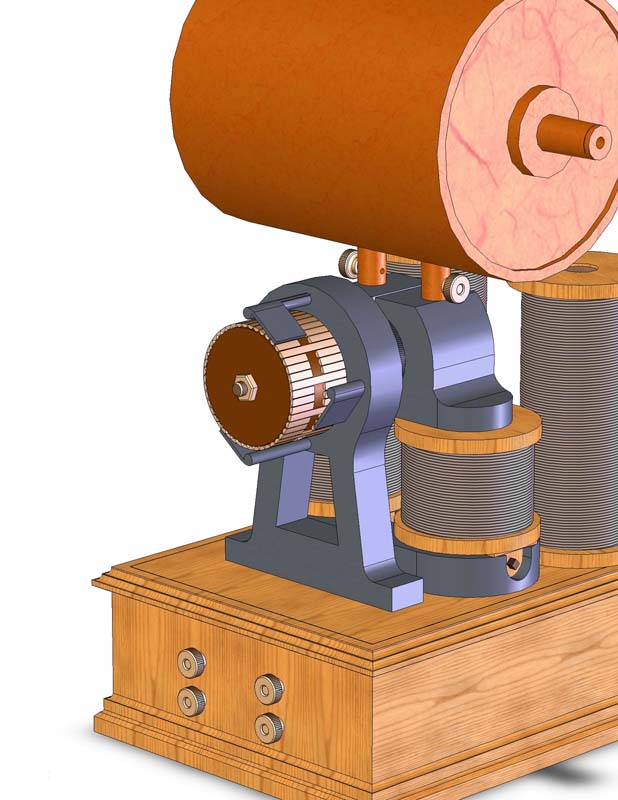
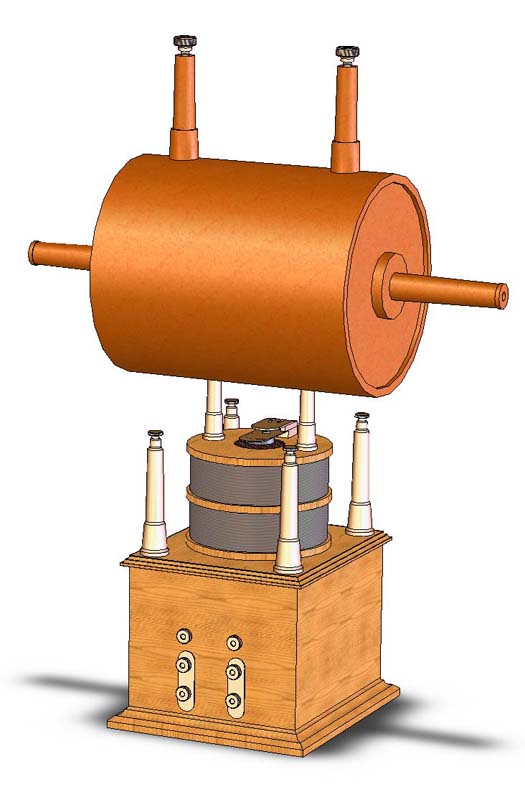

Comment